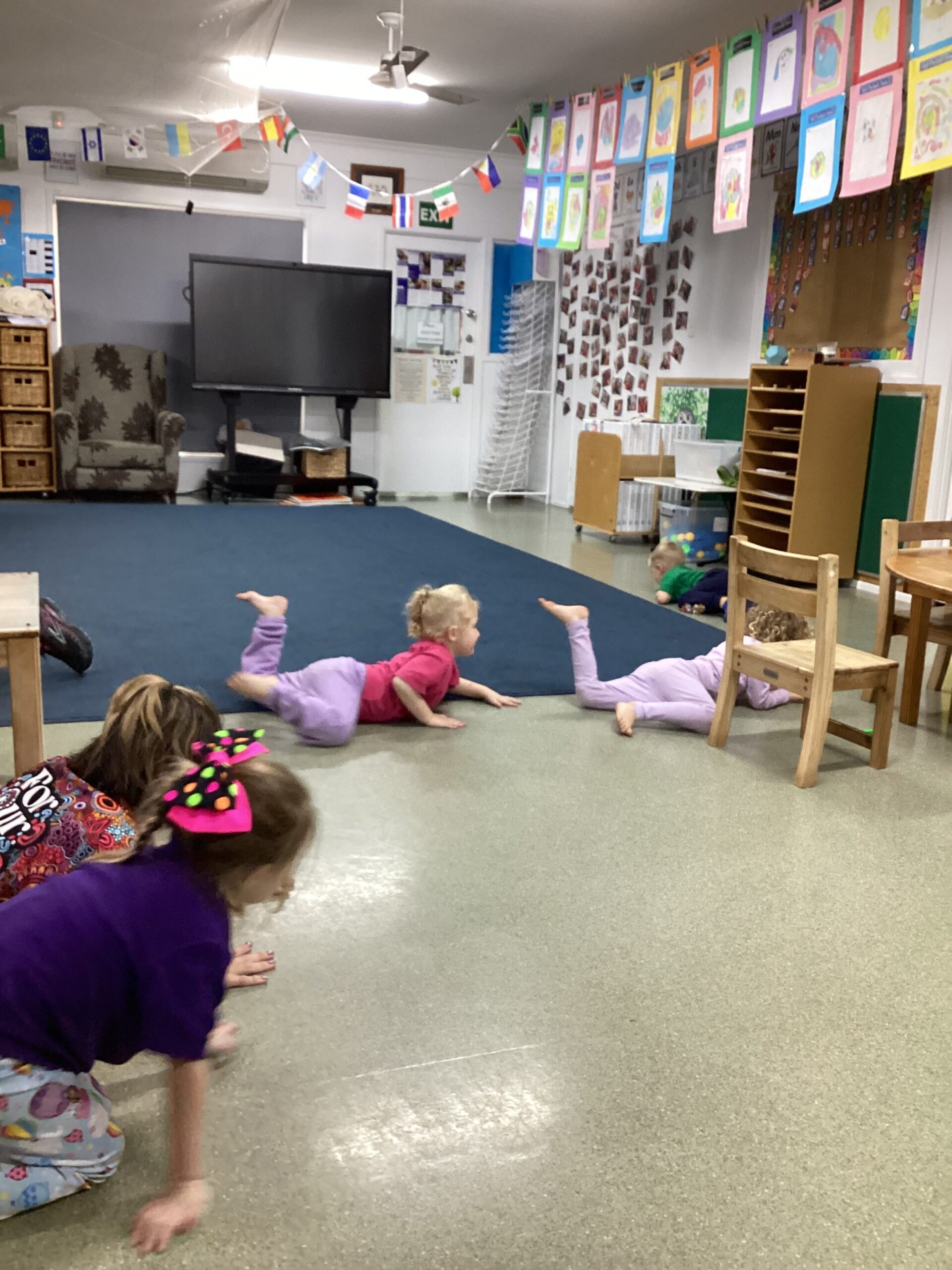Make the still time better … with these simple movement activities.
It’s well established that young children can’t and shouldn’t sit still for long periods of time – children need to move. The benefits of regular brief movement breaks for children in the classroom include:
- Improved brain elasticity, which allows children to learn more easily,
- The part of the brain that processes movement also processes learning. So when children are sitting still, the learning process is actually hindered rather than enhanced,
- Endorphins are released (neurotransmitters that produce a feeling of well-being) making children feel more relaxed,
- And if you can get the children outside, contact with the natural environment has a calming effect on children [1]
These effects flow on to improved academic performance and classroom behaviour. [2]
In addition, regular movement breaks have been shown to reduce the use of ADHD medication among students and reduce the body mass index among overweight students. [3]“Movement activates all the brain cells kids are using to learn, it wakes up the brain. Plus, it makes kids want to come to school more — it’s fun to do these activities.”
John Ratey, Harvard Medical School [4]
The need for movement breaks in the classroom becomes more important when considering the broader issue of how sedentary children’s lives have become – only 14% of Australian children get the recommended 60 minutes of physical activity per day and they spend 70% of the school day sitting. [5]
So the arguments for physical activity are obviously compelling – the challenge is to integrate it into the classroom schedule and make it easy for teachers (and parents!) who have limited time and resources.
At Learning Connections, we train teachers to implement our daily classroom program at the beginning of each school day (and develop tailored programs for individual children to do at home). Our core classroom program is a specialised program that enhances sensory and reflex integration and prepares children for learning. But in addition to implementing the core program we also encourage teachers to provide simple movement breaks regularly throughout the day. These movement breaks help children to refocus and “switch back on” to classroom learning. They should be done as soon as children start to fidget and wriggle and lose focus – or for a minimum of 5 minutes each hour.
Here are some suggestions –
- Try some simple star jumps, hopping, jumping and cross pattern movements
- To give the activity a greater neurological effect, create a sequence to use for transitions. For example 5 star jumps, 3 hops on the right leg, one jump backwards, 2 jumps forward, then cross-pattern marching.
- To enhance motor sequencing have the children verbalise the movements. This also helps with auditory sequencing (plus it’s fun, kids love it!)
- With younger children try animal movements on their tummies (e.g. snake or crocodile)
- You can also include animal movements on hands and knees (e.g. lion, tiger or dog)
- Play “Simon Says”
- Complete the movement yourself as you describe it and have the children copy it. Use spatial terms e.g. “move behind your chair” “arms above your heads” “jump between the chairs”. (spatial awareness is critical for developing maths concepts)
- Mix it up by sometimes just saying the movement, sometimes just doing the movement, sometimes doing both. (this creates more of a neurological effect because it involves both the auditory and visual systems)
- Get children making shapes and letters with their bodies
- Spinning, jumping, bouncing, swinging, rocking, skipping and twisting are all great for “switching kids brains on”!
We hope you find these movement activity suggestions helpful.
If you would like more suggestions, get in touch! We are happy to help.
[1] B Johnson, ‘Why Students Shouldn’t Be Forced to Spend so Much Time Sitting at Desks in Class’, The Washington Post, 2019 <https://www.washingtonpost.com/education/2019/02/07/why-students-shouldnt-be-forced-spend-so-much-time-sitting-desks-class/> [accessed 21 July 2021].
[2] Celia Álvarez-Bueno and others, ‘Academic Achievement and Physical Activity: A Meta-Analysis’, PEDIATRICS, 140.6 (2017) <www.aappublications.org/news>.
[3] Johnson.
[4] Quoted in D De La Cruz, ‘Why Kids Shouldn’t Sit Still in Class – The New York Times’, New York Times, 2017 <https://www.nytimes.com/2017/03/21/well/family/why-kids-shouldnt-sit-still-in-class.html> [accessed 5 July 2021].
[5] N Lander and J Salmon, ‘Kids Spend Nearly Three-Quarters of Their School Day Sitting. Here’s How to Get Them Moving — during Lessons’, The Conversation, 2020 <https://theconversation.com/kids-spend-nearly-three-quarters-of-their-school-day-sitting-heres-how-to-get-them-moving-during-lessons-131897> [accessed 8 July 2021].













